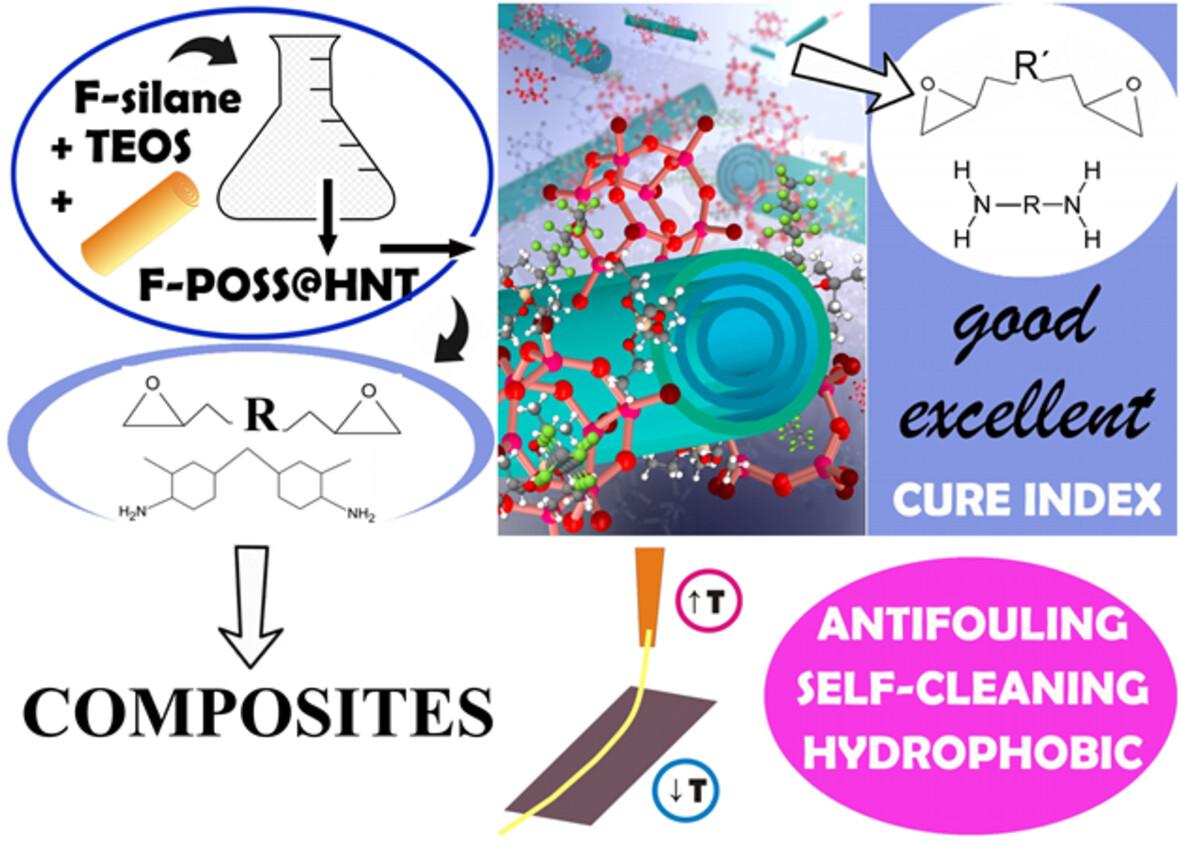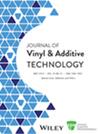Fluorinated-polyhedral oligomeric silsesquioxane (F-POSS) functionalized halloysite nanotubes (HNTs) as an antifouling additive for epoxy resin
Abstract
Antifouling epoxy resin serves as a member of advanced nanocomposite coatings and engineered surfaces. Nevertheless, developing an antifouling epoxy composites is a state-of-the-art technology. Herein, a complex nanostructure is tailored to be served as an advanced additive giving the antifouling characteristics to the epoxy resin. F-POSS@HNT hybrid nanostructure, that is, halloysite nanotubes (HNTs) decorated with fluorinated polyhedral oligomericsil sesquioxane (F-POSS), was synthesized and characterized. Chemical structure changes, thermal stability and morphology of hydroxylated HNTs (hHNTs) intermediate and F-POSS@HNT ultimate nanostructures were analyzed by FTIR spectroscopy, TGA and TEM, respectively. The F-POSS@HNTs catalyzed the epoxy-amine crosslinking reaction, taking “Good” or “Excellent” crosslinking tags an quantified by the “Cure Index.” The apparent activation energy values were calculated for the epoxy (reference), epoxy/hHNTs, and epoxy/F-POSS@HNTs systems (26, 51, and 47 kJ mol−1, respectively). Contact angle measurements were performed via dynamic tests demonstrating improved hydro- and oleophobicity of the thermoset composites. The advancing contact angle with diiodomethane increased 36% and 30% for nanocomposites containing 5 and 10 wt.% of the developed hybrid nanostructure, respectively, compared with the neat epoxy. Likewise, 54% and 67% reduction in paraffin fouling in the same order confirmed their antifouling ability. Regarding self-cleaning characteristics, 24% and 33% surface recovery were observed, respectively.
Highlights
- Antifouling surface was achieved in epoxy thermoset nanocomposites for potential industrial applications.
- Self-cleaning behavior correlated with low wetting and antifouling properties.
- F-POSS@HNT nanofillers were synthesized and successfully added to epoxy matrix.
- Both hHNT and F-POSS@HNT showed a beneficial autocatalytic effect on epoxy-amine reaction yielding satisfactory polymer crosslinking.
- Activation energy was reduced by incorporating F-POSS@HNT compared with hHNT, signature of facilitated crosslinking.



 求助内容:
求助内容: 应助结果提醒方式:
应助结果提醒方式:


